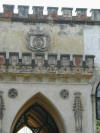Traffic car column PAK
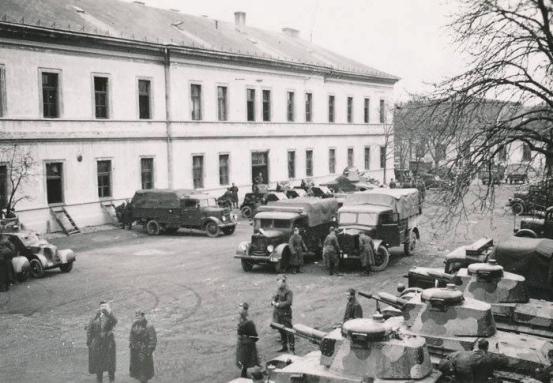
Evacuation of the Czechoslovak army from Košice before their occupation by the Hungarian army on 10.11.1938 in connection with the Munich Agreement 30.09.1938 and subsequent Vienna arbitration 02.11.1938. Pictured trucks Walter PN, Tatra T 27, Skoda Lt.35 tanks and armored Tatra vz. 30.
Lt. colonel GS. Ferdinand Čatloš, in October 1938 head of the military office of the autonomous government and deputy commander of operational armies in Slovakia, was a departmental colleague of the District Chief in Prešov Dr. Aladár I. Ondrejkovič. He cooperated with him in connection with the evacuation of military units and Regional authorities from Košice to Prešov in connection with the Vienna Arbitration. Lt. colonel GS. Ferdinand Catlos (Captain of the Czechoslovak Legions in Russia, returned home 12 September 1920) was March 14, 1939 head of the Regional Military Command - KVV where he was subject to the President of the Slovak Land.
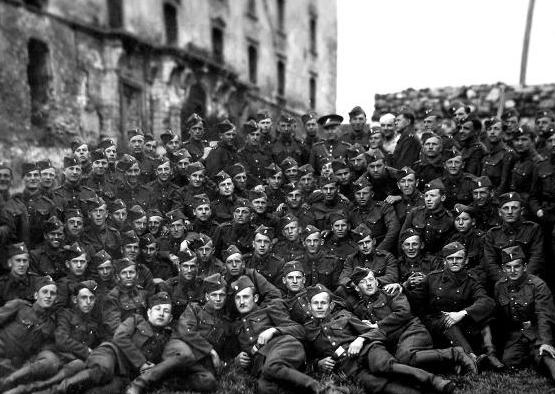
On March 14, 1939. 1st Automobile Battalion, the car column PAK had some of the units located also in the barracks on the Bratislava edge of the hill.
One of the most proven and respected officials (son of Anna Sandor de Szlavnicza) in Slovakia appointed by the President of the Land was the District Chief of Dr. Aladár I. Ondrejkovič. Therefore, in a very difficult situation in connection with the Munich Agreement, the Regional Office in Bratislava was transferred from Zlaté Moravce (where the seat of the President of the Czechoslovak Republic Topolčianka was subject to it) to Prešov with the task of organizing Košice, parts of Eastern Slovakia and Carpathian Ruthenia after the Vienna Arbitration. In Prešov was the District Chief of Dr. Aladár Ondrejkovič forced to confront armed marauders who entered his office from Poland and part of the territory occupied by Hungary. After 14 March 1939 the Prešov district found itself in a war zone in connection with the fighting of troops (and their evacuation with authorities and civilians) of the already non-existent Czechoslovak state in Carpathian Ruthenia with the Hungarian army, which already 22nd March attacked the territory of Slovakia.
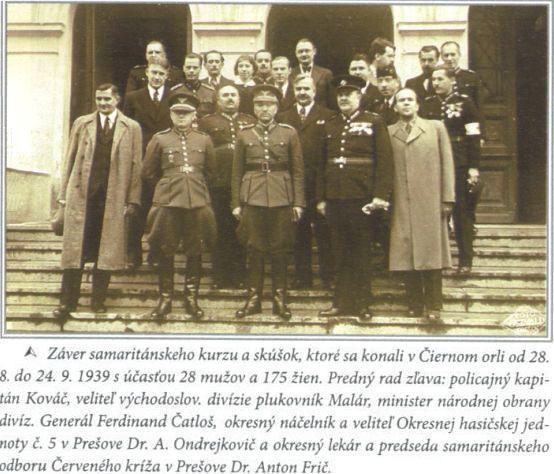
Blood relative of District Chief Dr. Aladár I. Ondrejkovič and his nephew lieutenant Aladár II. Ondrejkovič Baron Imre Ivanka was the founder of the Red Cross in Hungary. The founding meeting of the Red Cross in Hungary took place on 16 May 1881 in Budapest. On May 17, the Women\'s Association merged with the newly founded Red Cross organization, Baron Ivanka became its administrator. He was among the initiators of building the Red Cross Hospital for the training of professional and volunteer nurses.
Minister of Defense General I class Ferdinand Čatloš personally participated in an inspection trip during the autumn campaign of the Slovak Army in 1939. On the picture with the mayor of Sanok, General II. class Augustin Malar and the civilian population of the city.
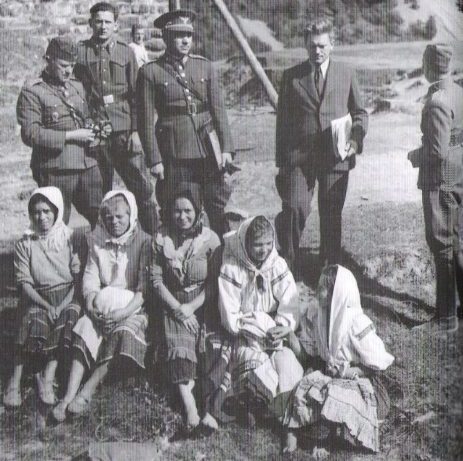
Lt. colonel gst. Ferdinand Čatloš, in October 1938 the head of the Military Office of the autonomous government and deputy commander of the armies operating in Slovakia was the counterpart of the District Chief in Prešov Dr. Aladár I. Ondrejkovič. He collaborated with him regarding the evacuation of troops and the Provincial Office of Kosice to Presov in connection with the Vienna arbitration. Pictured left General Augustin Malár (Lieutenant of Cs. legions in Italy to 1918) *18.07.1894 in the Reitern †DD.MM.1945 in the Concentration Camp Flossenbürg. He was the then commander of Lieutenant cavalry Aladár II. Ondrejkovič (commander PAK) on the Eastern Front in the years 1941-1942. He recommended him to study at the Military Academy Automobile AVA and direction for a career officer of the profession. In periods of study he was counted on the service front. Military occupation of one generation was the son of the family Ondrejkovič unwritten obligation. In the middle of the Minister of National Defence, General I. cl. Ferdinand Čatloš. Some task to lieutenant of cavalry in reserve, subsequently First lieutenant. aut. Aladár II. Ondrejkovič in 1939 and from 1943-44 he penned by bypassing its commander.
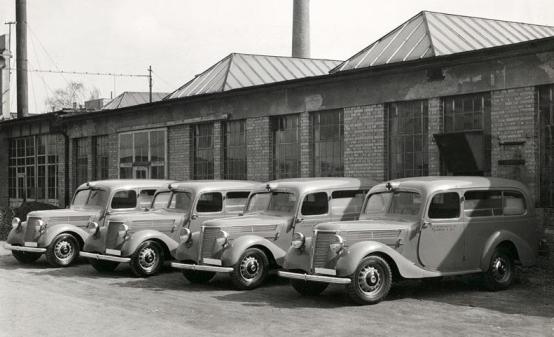
New ambulance emergency service cars of Red Cross Praga Lady. County Bratislava advisory board Slovakian ambulance SCP based. Chairman was District Chief Dr. Ondrejkovič. 1. STK. Bratislava, October 30, 1940. On Tuesday afternoon about 16 hours.It was in the room of the Association of Slovak Red Cross Bratislava constituent meeting of County Advisory Council Slovakian ambulance to be head of the organization providing first aid in the Bratislava county. Department of Slovak rescue services and the activities of County Advisory Council made a central referent Šimanovský. For the County Advisory Councils SCP was unanimously elected Bratislava District Chief Dr. Aladar Ondrejkovič and county commander Fire Slovak Union delegate Dr. Straka from Malacky.
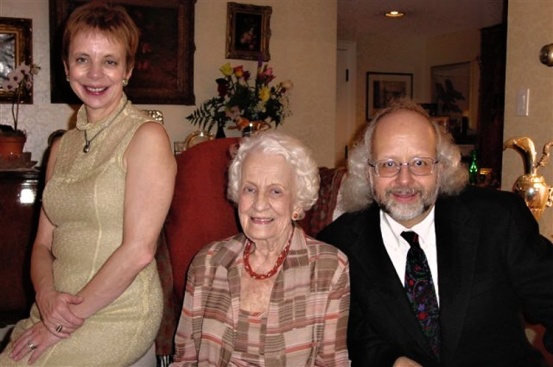
Lady Veronica Cowling Kerney, Lady Gizelle Kerney genus. Ondrejkovič and sir Peter Kerney
Gizelle "kamaradeschaft" with a head of state in a slightly different form is repeated in the life of her daughter Veronica. Veronika married for a second husband Colonel Canadian Army. Honorary commander of his regiment until recently (this year took over the function of the wife of the heir, Prince Charles) Princess Alexandra and with that, Veronika befriended to the extent that she was invited to her and with her husband in England visited. A visiting. A beautifully were recruited. Last year in Bratislava, Slovak television several times projected film "Slovaks in Canada", which has already been broadcast in Canada. Film shot Slepčíková Margaret and her husband Igor Rešov. One Canadian figures of Slovak origin, portrayed in the film, is Gizelle Kerney.
shortened Josef Čermák (Satellite).
Governor of the National Bank and Chairman of the Supreme Supply Office Dr. Imrich Karvaš reserved his free hand in personnel issues. In 1940, he appointed a new District Chief in Bratislava, Dr. Aladár I. Ondrejkovič as chairman of the board of the newly constituted Cooperative of Distilleries. He gave him all the production distilleries. With this decision, Dr. Aladár I. Ondrejkovič also supplies alcohol to Bi-Bo-Li fuels for motor vehicles according to the instructions of the Governor of the National Bank. With this measure, Dr. I. Karvaš through Dr. Aladár I. Ondrejkovič subordinated indirectly and motorized units of the Slovak Army, because alcohol was 50% of the fuel component Bi-Bo-Li.
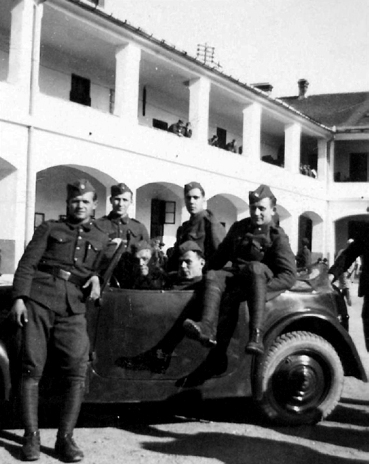
Lieutenant of cavalry in reserve Aladár II. Ondrejkovič perform in automotive battalion 1 SV Nitra, in Pribina barracks in Nitra and Trenčín. He was assigned as commander Traffic automobile column which then went on 28.06.1941 to command the field. Pictured in Nitra soldiers with military vehicles Škoda Popular.
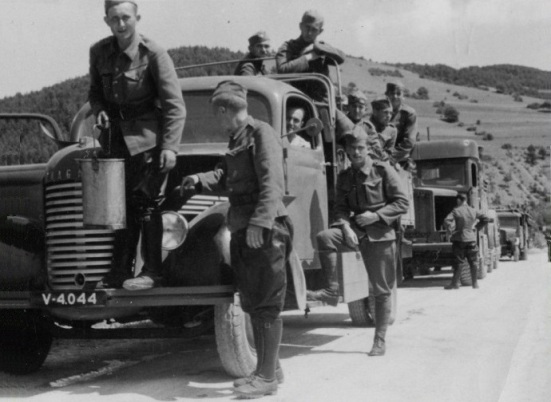
Vojenské cestné nákladné vozidlá Praga RN, terénne ŠKODA 6 (STP 6L/6 ST 6T) a Praga AV pri cvičných jazdách.
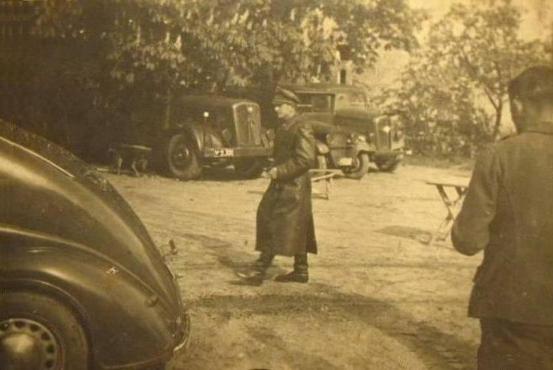
Vehicles of the PAK, left Steyr 55, Tatra T 27d, Škoda Popular and Praga.
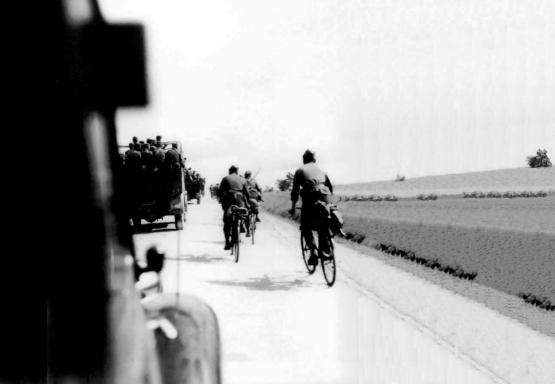
Slovak military vehicles of the Traffic motorcades column PAK in the June 1941.
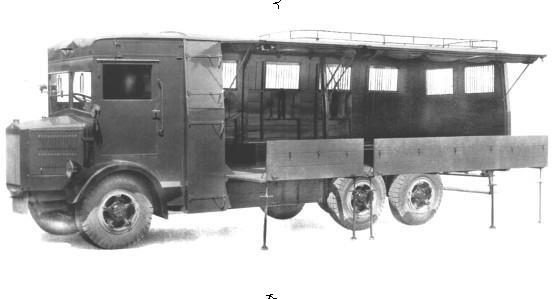
Workshop truck Tatra T29. Fast Division had a great shortage of commanders motorcade, garage foremen and technical specialists, despite their struggle was enough. They were trained in Germany at the request of German military advisers, but avoid the deployment in the field under various pretexts.
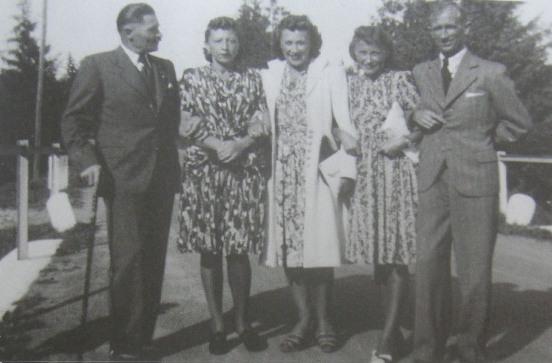
Head of the Automobile Service of the Ministry of National Defense Colonel. gst Ján Krenčej and Major. vet. DVM. Mikuláš Ferjenčík (chief veterinarian of 8th Dragoon Regiment in Pardubice during the period when the learner local school for reserve officers aspirant cavalry Aladár II. Ondrejkovič, his opponent in the equestrian events. General DVM. Mikuláš Ferjenčík in exile after 1948 worked with Lady Gizelle Kerney born Ondrejkovič) with their wives in the High Tatras. In the middle of the wife of Lieutenant Colonel. gst František Urban.
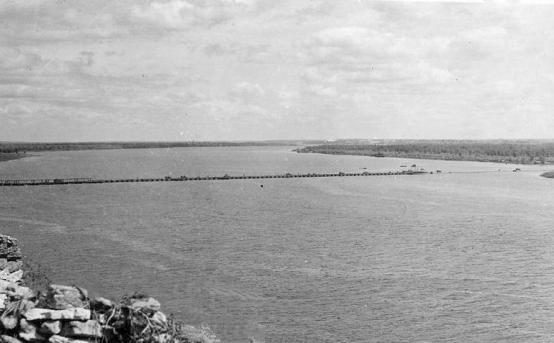
Transportation the PAK from the Rapid Division across the Dnieper River by pontoon bridge, campaign in the year 1941
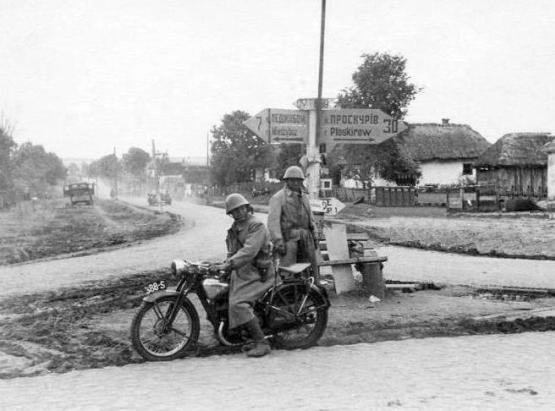
Automobile column PAK of the Rapid Division via Proskurov - Donetsk region of the Ukraine in the year 1941 with motorcycle Jawa 175 (as of 03/18/1939 it was of the military administration assumed Czechoslovakia for new Slovak army 161 solo motorcycles).
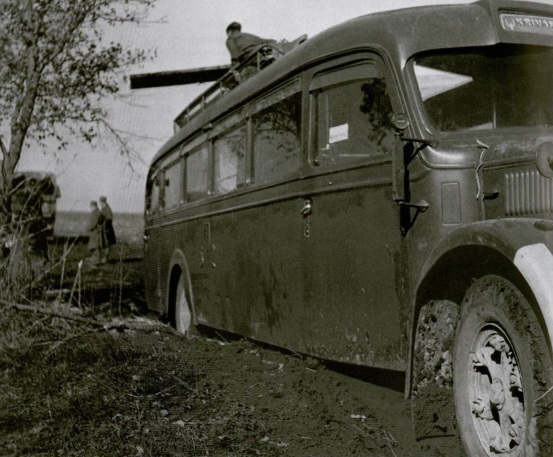
Mobilized bus Sauer from Slovak Railways put into operation in Ukraine in the Rapid Division in the 1941.
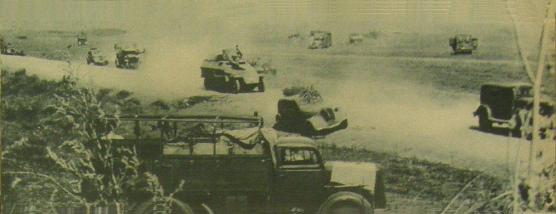
PAK trucks and passenger cars on the dirt roads of Ukraine when it comes to the Wehrmacht column. Pictured in front of it by the off-road truck Tatra T27 and the staff car Škoda Popular crew.
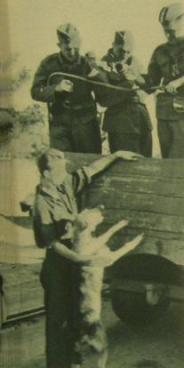
Domestic animals were scattered for soldiers, drivers, and car mechanics during their long journeys on endless Ukrainian plains.
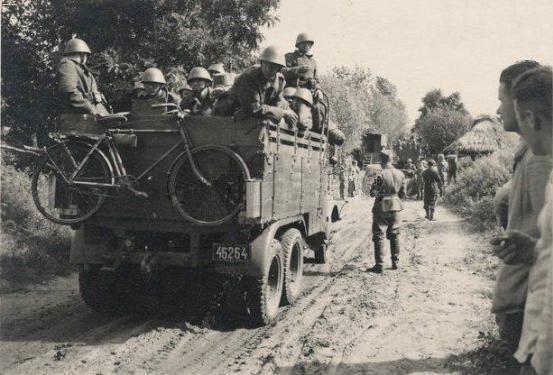
Terrain military truck Praga RV by then soldiers of 20th Motorized Infantry Regiment of the Rapid Division between the rivers Dnieper and Don.
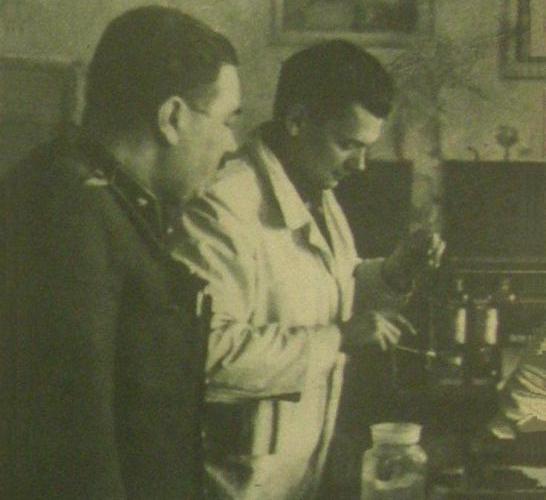
The Improvised biochemical laboratory from the 11th Field Hospital performed, among other things, the preparation of medical preparations, analyzes of biological samples, drinking water and food for the units of the Rapid Division, allied units and partly for the civilian population.
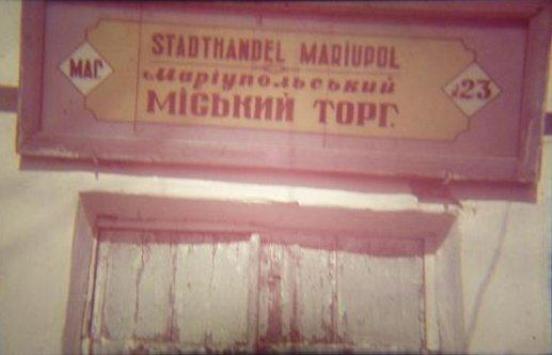
Thus seemed shops in the port city of Mariupol in the Ukraine in the years 1941-1945 and in port cities Izmail, Reni, Odessa and Chisinau and between 1965-1993.
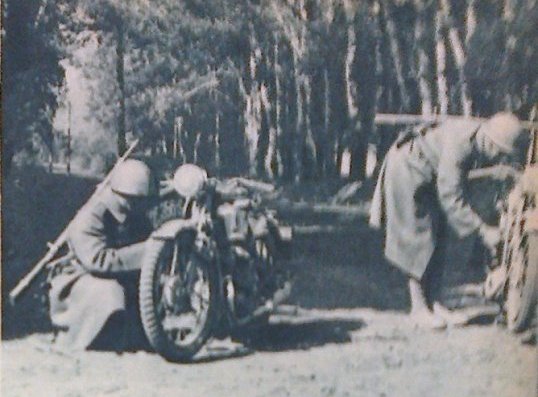
Regulators of the PAK car column on their Jawa motorcycles around the Mius River when moving.
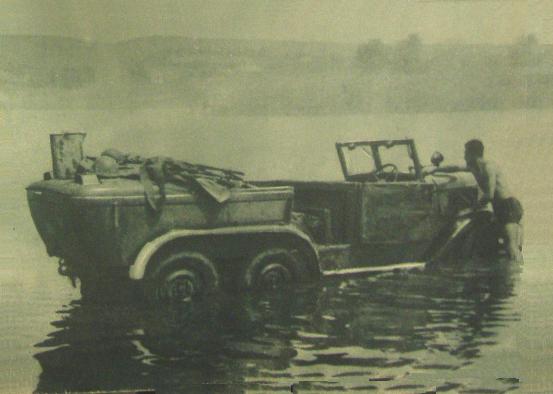
The Commando terrain Automobil Praga AV has been well-established at the Slovak Rapid Division on the Eastern Front. Drivers rated their rankings and kept them in perfect condition.
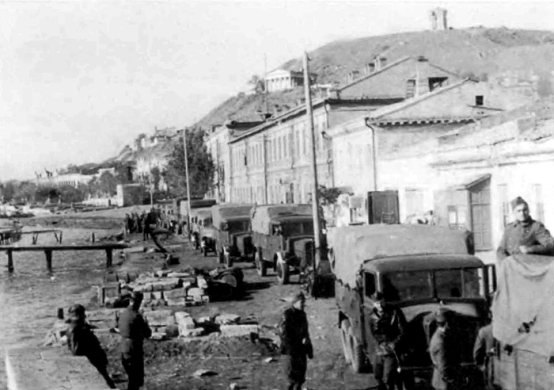
Transportation Military vehicles Praga RV, Tatra T27 and Praga RN of the Traffic motorcades column PAK of the slovakian Rapid Division in the harbor Geničesk at Azov Sea in the years 1941-42.
_____3nicholaspavella.20214_145246_23.jpg)
Azov Sea today after the sixty years
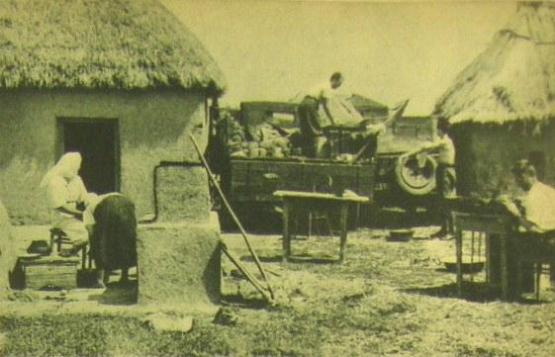
The Rapid Division\'s soldiers were eagerly awaited for the PAK-powered vehicles that had been joined by the front-runner when they were deployed and spread out on the yard of the Russian cottage.
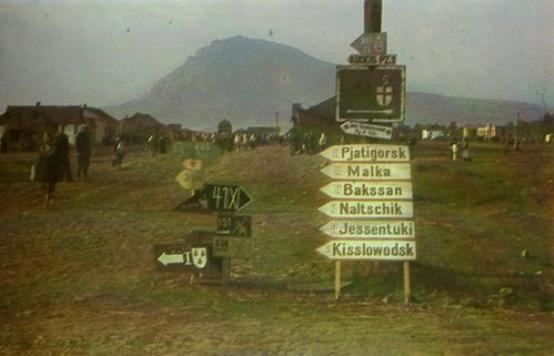
Traffic motorcade PAK of Fast Division reigned from Mariupol and Taganrog in the Sea of Azov in Rostov-on-Don and further to the North Caucasus.
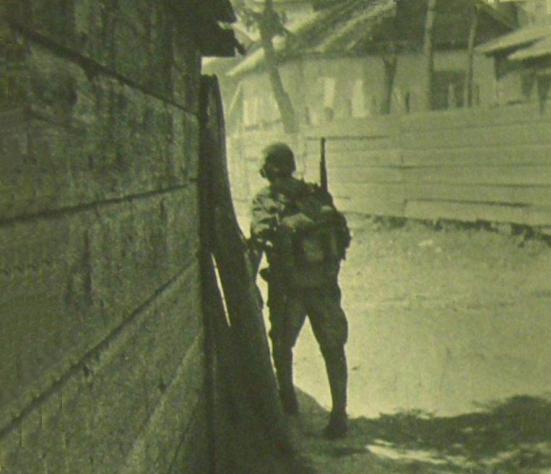
Severný Kaukaz 1942.
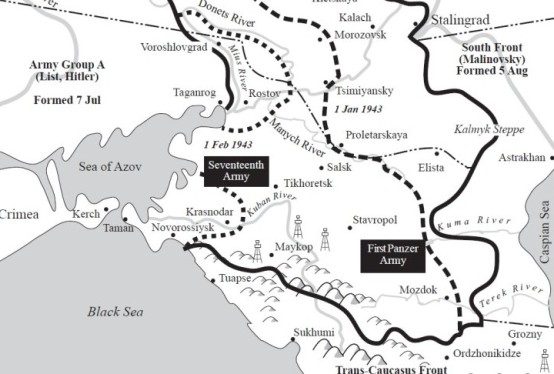
Occupation of the traffic automobile column PAK is of Rapid Division in the North Caucasus. From the airport, Maykop, Krasnodar, Anapa and Slavjanskaja on the Taman peninsula worked Squadron 13th.
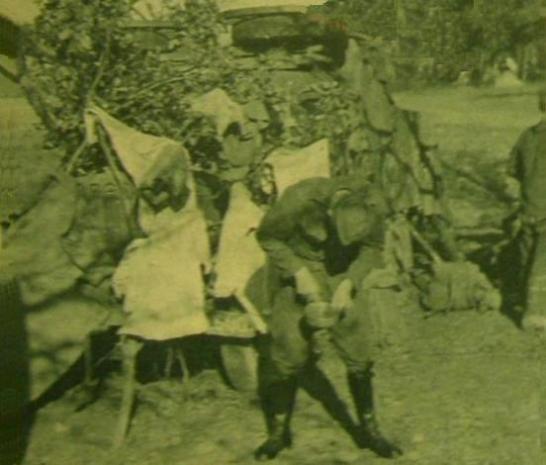
The consistent masking of military vehicles was a necessity in the North Caucasus, such as the camouflaged Tatra T82 from PAK.
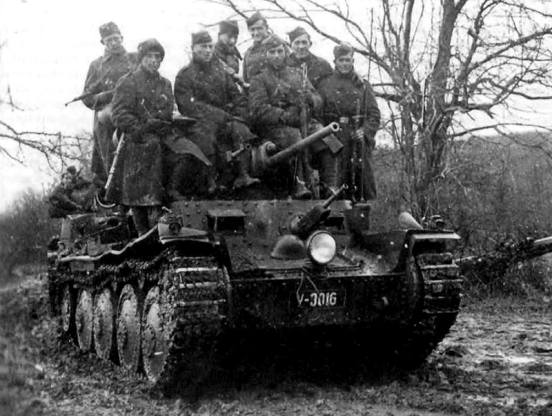
Praga Lt 38 in the North Caucasus. In the autumn rains, only tracked vehicles or horse-drawn carriages were able to move on the unpaved North Caucasus roads. Tanks Praga Lt. 38 towing stuck military trucks, or used as an emergency vehicle and transporting troops and cargo on the hull. Drivers with mechanics and other PAK staff of Lieutenant cavalry Aladár II. Ondrejkovič were exposed to stress beyond their physical and mental tolerability.
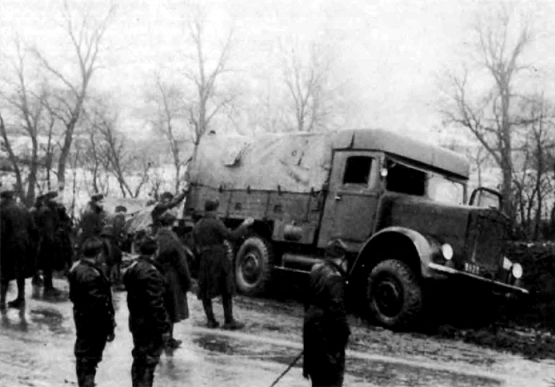
Terrain military truck Škoda 6ST6 L of the PAK relevant to the rapid division of the North Caucasus in the years 1942-43. From the image, it is clear that the technical division of the Rapid been rigged with gear quality inherited from the pre-Munich Czechoslovak army.
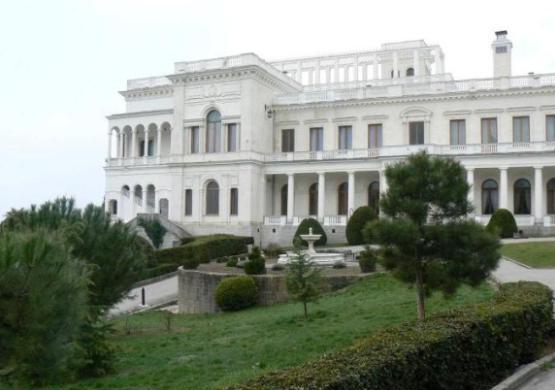
Livadia Palace (of marmor pentelicum) of Tsar Nicholas of Russia in the Black Sea spa town of Yalta in the Crimea recalled Lieutenant cavalry Aladár Ondrejkovič during his visit in the summer of 1943 social origin families Sandor de Szlavnicza.
In 1813 they receded over Veľké Bielice French soldiers after the defeat of Emperor Napoleon in Russia. Behind them followed through their Bielice pursuing Russian army of Tsar Alexander I of the wounded, sick and starving French, Russians subsequently treated and fed the family mansion Anna Balazsovics, great grandmother Maria Ondrejkovičová née Turba. Explaining to eat a little misunderstood. Many of them dying when they had eaten. Disobedient, they did not wait for it to cool them and freshly baked bread alone it collected to the furnace.
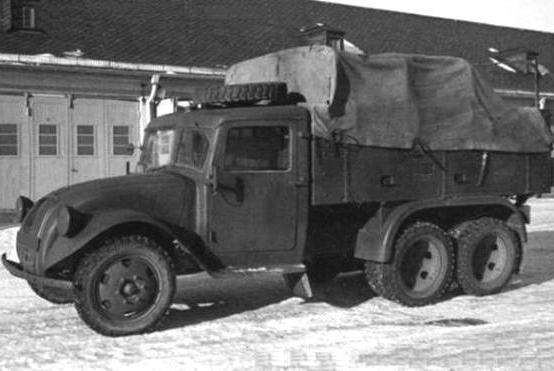
Tatra T 82 had 1st ID in the summer of 1943 in the state has only 8. Part was allocated to 14. lightweight battery DPLP with cannons VKPL Mk 36 caliber 2 cm Oerlikon its artillery commander First Lieutenant Josef Balažovjech (compatriot and relative grandmother of lieutenant of cavalry in reserve Aladár II. Ondrejkovic) from which 10 July 1943 she worked at the airport Anapa to Tamaň peninsula.
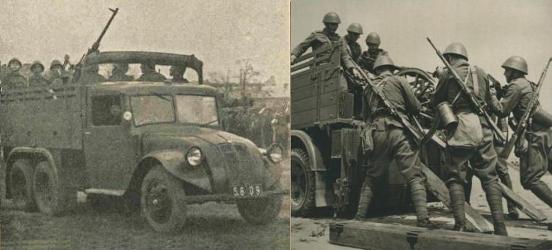
Military truck Tatra T 82 and 2 cm cannon VKPL vz. 36 Oerlikon lead with the possibility of fire and skip cars. On the date 03.18.1939 were of the Czechoslovak military administration in Slovakia, assumed 64 cannon vz. 36.
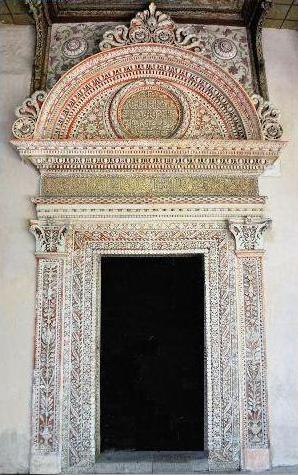
Bakhchisaray (Бахчисарай) seat Crimean Khan admired the soldiers, especially officers Slovak 20th Infantry Regiment in the summer of 1943, many who came from the family of teachers, if they themselves were in civilian occupations. In his poem he wrote fountains poet, novelist and dramatist Alexander Pushkin. Processed in POEM story of unfulfilled love Girej Khan, who left the memory of slain nice to build a fountain of tears.
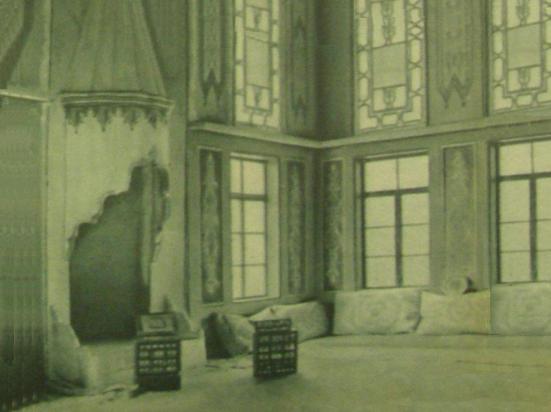
Interior of the palace of Prince Mikhail Semionovich Voroncov in Alupka, Crimea. In summer 1943 when Lieutenant Aladár Ondrejkovič visited him with his colleagues from the Rapid Division. During his visit, the Napoleonic Wars, in which he fought between 1805 and 1814 as an ally of Rittmeister Johannes Ondrejkovits (he has a bible in the labor of a lion holding in the labels) and First lieutenant Josephus Sandor de Slavnica, with Russian rulers, led by Prince Voroncov.

Slovak airmen and officers with two tanker Tatra T 110 Trailer. The July 21, 1943 Fast Division had two tanker trucks terrain Tatra 85 with Trailer Tatra T 110. Pictured is the beret aviator warant air force Pavol Zeleňák with which the author as a young child met in 1952 in Bratislava Slavonic street.
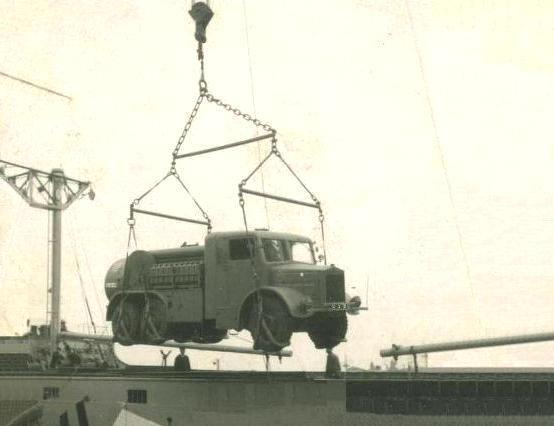
On the date 03.18.1939 were of the military administration assumed Czechoslovakia in Slovakia for new Slovak army 74 towed tank vehicles and 46 road tankers Tatra T85.
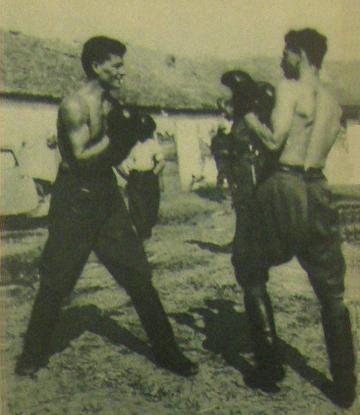
Officers\' representatives, aspirants, members of the PAK, and boxing at the front, were preparing for exams at the Military Academy in Bratislava. On the left Tatra T57A from Commander PAK.

At the end of July 1943, the train to the Rapid Division at the Djankoi railway station in Crimea and then PAK trucks to HQ Voinka Front Theater. His members were also classmates of Magdalen, Sisters of Lieutenant cavalry Aladar Ondrejkovič. At the command of the commander, he assigned the trucks to the Front Theater with drivers for transport to the towns and villages where his troops were deployed. The theater returned to Slovakia on 13th August 1943.
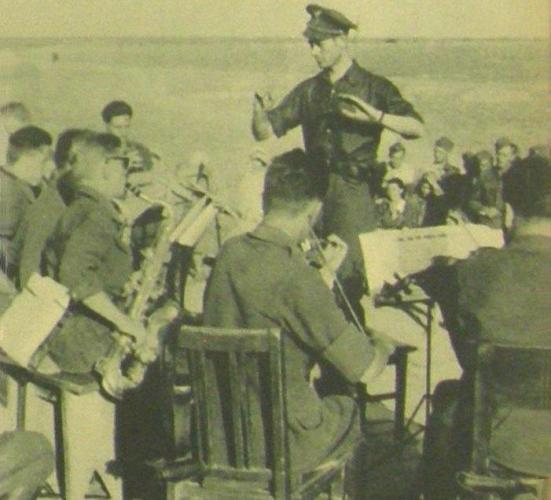
The concert of the SVS Front Theater, somewhere behind the front line, is conducted by its commander First lieutenant Zdenko Mikula. In the 1960s, 20th century Some former members of FT SVŠ to Captain aut. Res. Aladár Ondrejkovič reminded the transport of their ensemble to the Crimea with its PAK vehicles.
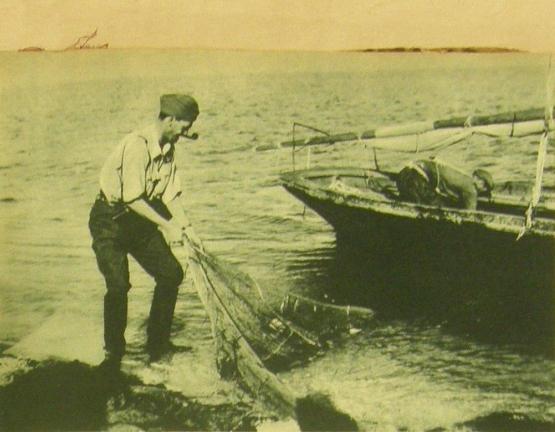
Joint fishing with Russian fishermen in the Crimea in summer 1943.
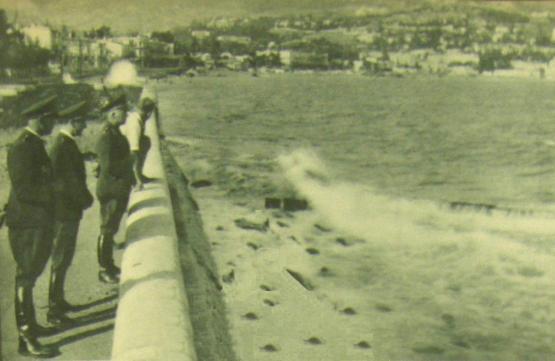
Minister of Defense of the Slovak Republic 1st class General Ferdinand Čatloš in Crimea in 06.09.1943 in the company of the crew officers of the Rapid Division and PAK Officer. Dňa 6. septembra 1943 s generálom Jurechom navštívil maršála Kleista v Simferopoli so stanoviskom slovenskej vlády.
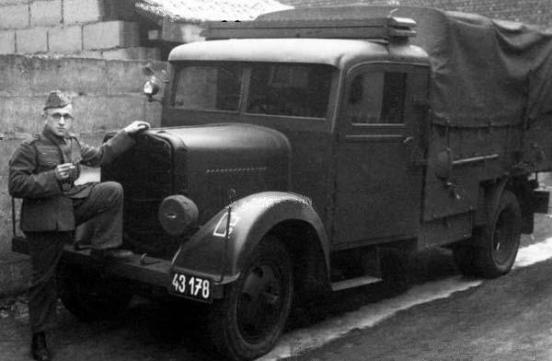
Former military truck of Czechoslovak army Walter PN with a load capacity of 2000 kg. Given the Lieutenant cavalry Aladár II. Ondrejkovič protocol signed orders dated September 12, 1943 Commander of 1st Infantry Division (former Rapid Division) had to remove from the Crimea Slovakia 10 field unserviceable vehicles. It was a 5 motorcycles (CZ 175, Jawa 250, Jawa 350, Ogar 350, DKW 350), 3 motor cars (Skoda Popular, Tatra T 57, Praga AV) and 2 trucks (Tatra T 29, Walter PN).
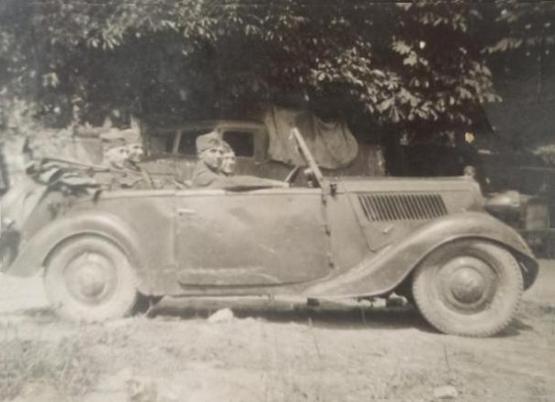
Military open passenger car Skoda Popular, HQ Trenčín-Zlatovce.
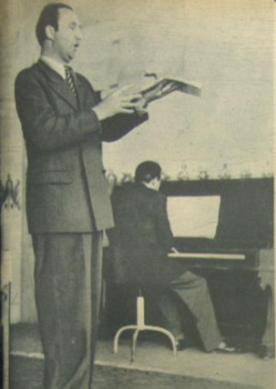
Alexander Welitsch, Yugoslavian, baritone, member of the Vienna City Opera and guest of the Slovak National Theater concerted at the 1st Military Hospital in Bratislava at the Red Bridge (Commander Mjr MUDr. Ladislav Dohnányi) for the Wounded and Sick Soldiers of the Slovak Army.
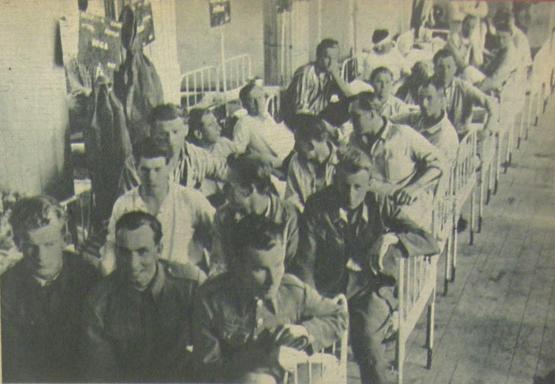
The Slovak soldiers and officers at the 1st Military Hospital at the Red Bridge in Bratislava listen to the performance of the singer of the Vienna opera Alexander Welitsch. At the beginning of 1944, First lieutenant reserve Aladar Ondrejkovič searched and healed their sick and wounded in Vienna in the Wehrmacht military sanatoriums and transported with ambulance of Corps automobile service them to the 1st Military Hospital in Bratislava with his military chauffeurs.
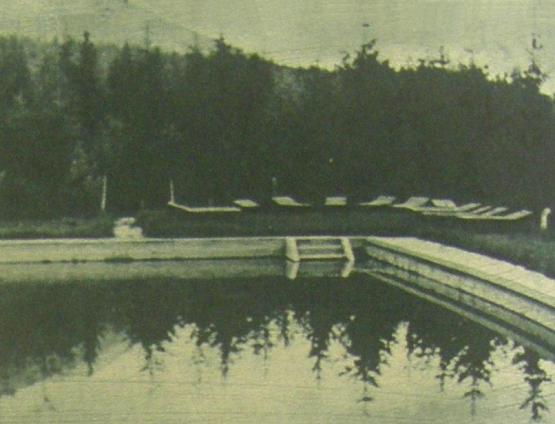
Swimming pool in the Tatra Military House in Tatranska Polianka in 1944. Officers including First lieutenant Aladár Ondrejkovič, in his obligatory local reconditioning stay with complete medical examinations after returning from the Eastern Front, used him despite cold water for training. Each year they have to undergo physical fitness tests with specified limits.
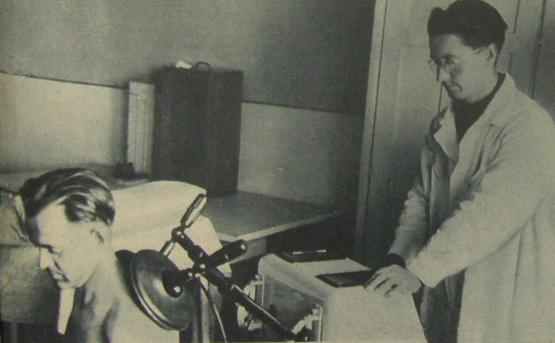
Investigation of Patients in the Military Institute for Infectious Diseases Matliare in the High Tatras in 1944. He was treated in early 1939 by Second lieutenant cavalry Aladar Ondrejkovic after more than 6 months of service in the field service and in SOS elite units in winter conditions.
snp_nosko.250513_221711_23.jpg)
From 01.09.1944 to 28.10.1944 Chief of Staff of the 1st Czechoslovak Army (1.ČSA) Slovakia Major. cavalry Julius Nosko with an armed escort and car Steyr 220 of Corps automobile park (it was between vehicles that dispose to the Banská Bystrica Fist lieutenant. aut. reserve Aladár II. Ondrejkovič). Based on secret orders colonel GST. Ján Krenčej military vehicles Corps automobile park gradually disponated to the Banská Bystrica First lieutenant. aut. reserve Aladár II. Ondrejkovič end of armed campaign Slovak army of allied ties with the Wehrmacht. The seriousness of the situation suggests that it has Chief of Staff Mjr. Nosko to shoulder an automatic weapon, five full tanks charges and folding stock in ready position to shoot. First lieutenant cavalry Julius Nosko was a platoon commander of School for reserve officers in Pardubice, at the time when she graduated aspirant cavalry Aladár II. Ondrejkovič. From March 1938 to 1939 he managed Cpt. cavalry J. Nosko Major infantry Alojz Androvič (related of families Ondrejkovič) of 2.section Main headquarters in Prague. In their roles 1938-40 cooperated with the Office of the District Chief Dr. Aladár I. Ondrejkovič. In the rank of Major. cavalry 08.07.-14.08.1941 was the Chief of Staff of the Rapid Brigade that has included a motorcade lieutenant cavalry in reserve Aladár II. Ondrejkovič.
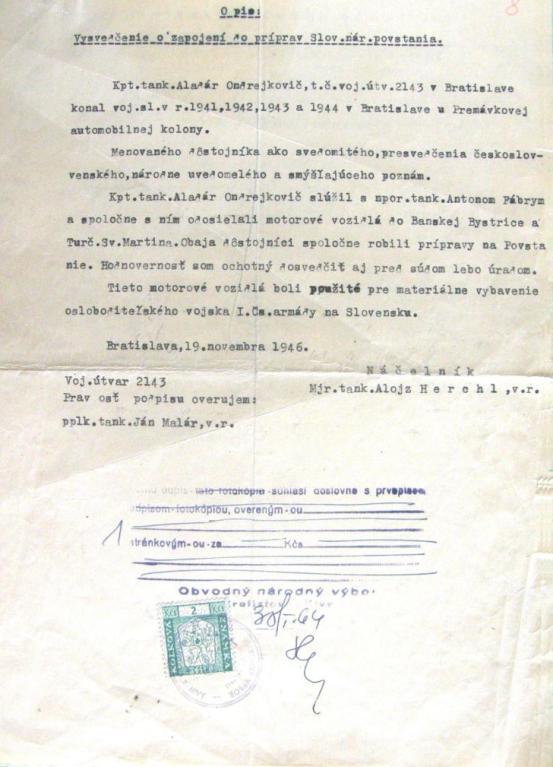
The certificate of activity Cpt. tank Aladár II. Ondrejkovič in Traffic automobile PAK, activities and action in the year 1941-44 armed campaign in favor of the Slovak military ties with the Wehrmacht.
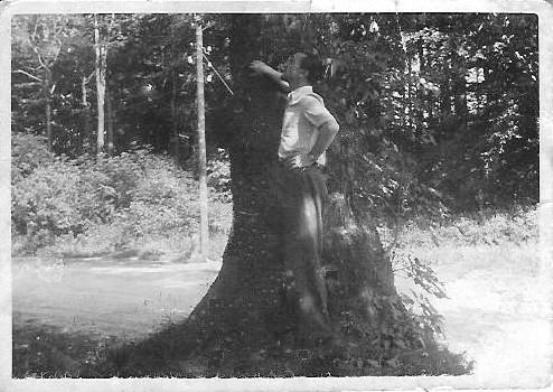
Captain Automotive Services Aladár II. Ondrejkovič emaciated after being released from a military prison in Hradec Kralové.
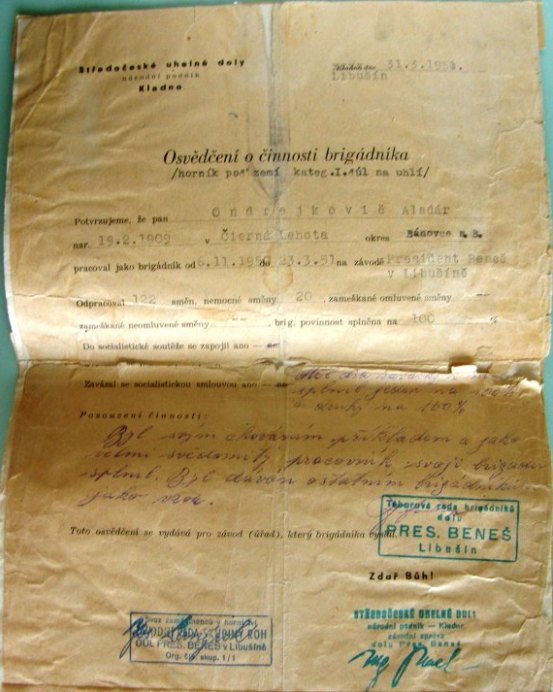
Evidence of the work of the Captain automobile Aladár II. Ondrejkovič in Coal mine President Beneš of Libušín in the Kladno
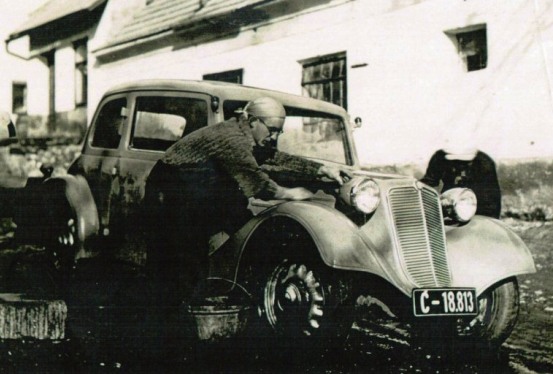
Such a silver Tatra T 57A was private property Cpt. Aladár Ondrejkovič to the gratuitous acceptance with accessories the Czechoslovak People\'s Army. Confirmation received Cpt. automob. Aladár Ondrejkovič news from 92nd Garrison Bratislava when it took over his private motor vehicle Tatra T 57A on 10 June 1953. When a vehicle occupied since 1989 MNO he replied that in that period, no vehicle Tatra T 57A 92nd Garrison Administration Bratislava has not taken.
Notes: Katarina Ondrejkovičová born Malár *1926 †1992; Mgr. Milan Mičura Malár Magdin 1921-1997 ; Magdalena Fábry born Vojčeková 1908-1996 ; Magdalena Mičurová born Sohlmannová ;
Source: Military Historical Archives in Trnava (VHA Trnava) ; Fireman\'s Unit number 5 ; (1) Slovak News Agency Bratislava the year 1940 ; Sidónia Hutárová ; Retired Lt. colonel tank Aladár II. Ondrejkovič ; Lady Gizelle Kerney ; Generál Air Force Theodor Obuch ; Retired General Karol Schwarz ; Ján Letovanec 8. apríl 1968 ;


 back
back 
